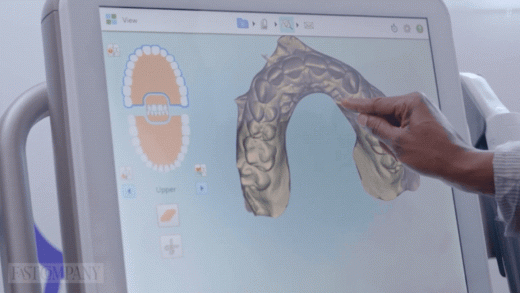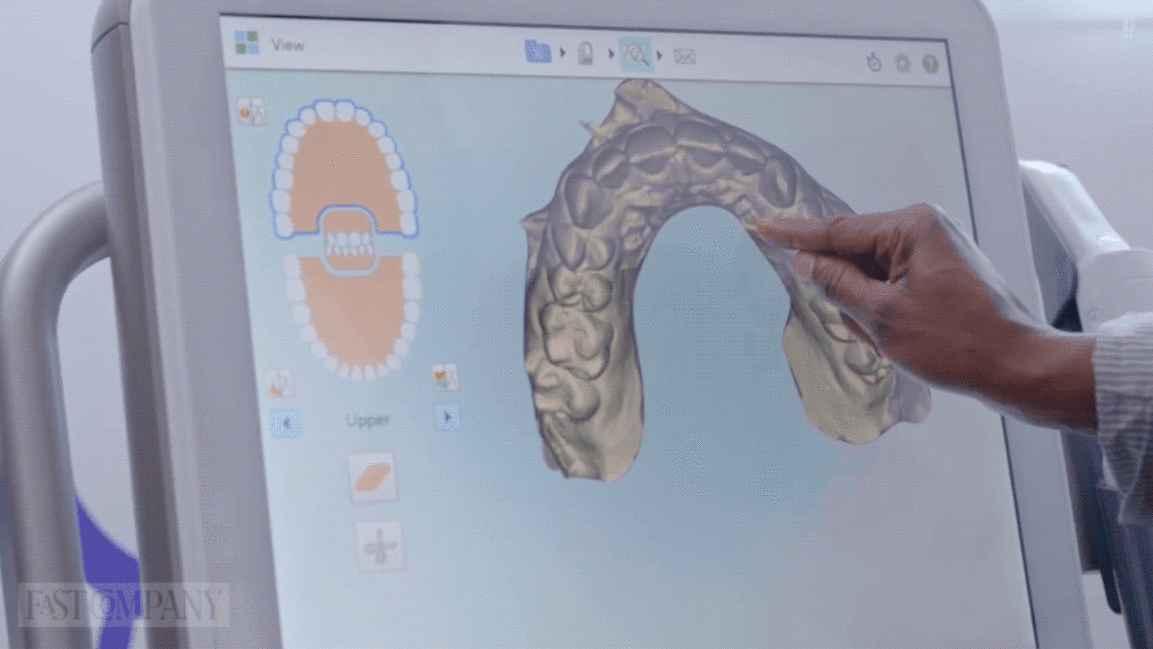How invisible teeth aligners can help make more sustainable cars
If you’re looking to get your teeth straightened with invisible aligners, you might end up contributing to more sustainable car parts in the process.
HP and Ford say they’ve found a way to recycle used materials from 3D printers into fuel-line clips for automobiles. They’ve partnered with SmileDirectClub, a direct-to-consumer Invisalign competitor, to repurpose the waste that comes from printing more than 40,000 aligners per day.
SmileDirectClub operates more than 60 printers from HP, making it the company’s largest 3D printing facility in the United States. When it’s finished making new aligners, HP gathers up all the molds of everyone’s mouths along with the waste powder that comes through the printing process.
Another recycling partner, Lavergne, then turns the waste into plastic pellets and hands them off to ARaymond, an automotive parts maker that uses injection molding to create the new fuel-line clips. Ford says the waste powder would otherwise have likely gone to a landfill.
This isn’t just an altruistic act of eco-friendliness. Ford says the recycled materials cost 10% less and are 7% lighter than conventional fuel clips, and they’re more resistant to moisture and chemicals as well. The company is installing them on Super Duty F-250 trucks for now, but believes it can bring the same approach to more vehicles in the future.
Ford already uses 3D printing in other parts of its manufacturing process, and says it eventually wants to make vehicles entirely out of sustainable materials. For now, though, it’s starting with the smallest of parts—and our desire for lovelier teeth.
(9)



